Are Japanese knives worth the money? Here's everything you need to know, from the different types to the pros and cons
They've been spotted in celebrity homes and professional kitchens, but they can cost a fortune – our cookware editor investigates the hype

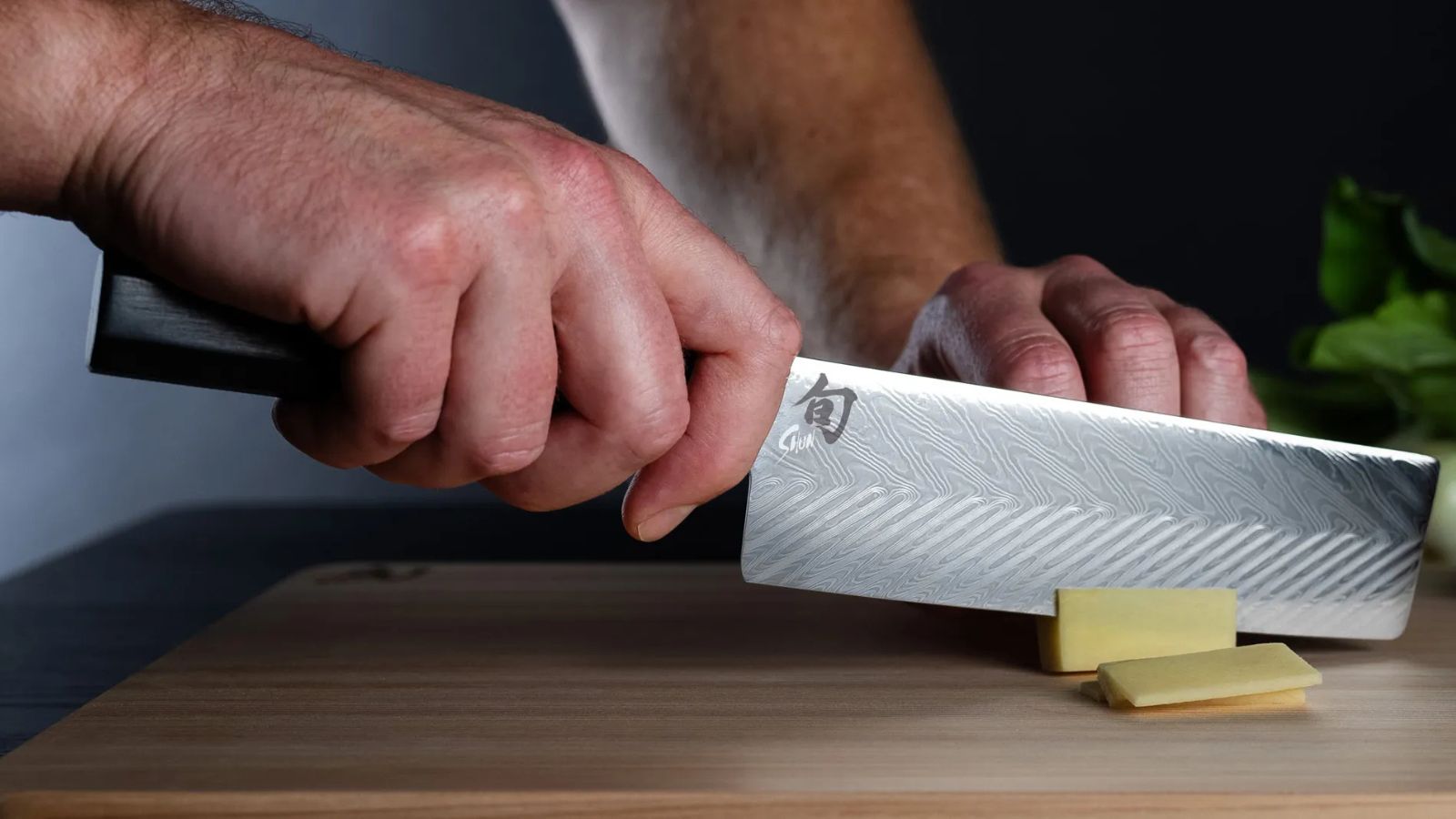
When I went to culinary school, we were advised to invest in Sabatier knives – simple, practical, and made in France. These days, I can’t help noticing the craze for Japanese knives. Celebrities, cookbook authors, and even chef friends have their expensive Japanese knives proudly displayed on magnetic racks in their kitchens, almost like artwork. They’re more than just tools; they’ve become symbols of luxury, culture, and taste.
I recently tested the premium Shun knives – the Japanese knives that Meghan Markle and Bobby Flay use, so I can answer the question: Are Japanese knives actually worth it? Or are we all just being seduced by sleek steel and Instagram envy?
I also asked professional chef and Asian cookery teacher, Maricel Gentile, for her expert opinion. As a restaurant owner and author of Maricel’s Simply Asian Cookbook, (packed with expert knowledge on Filipino, Cantonese, Japanese, Thai, Vietnamese, and Korean cuisines), Maricel also collects knives, and knows a thing or two about using them properly in the kitchen.
What makes Japanese knives unique?
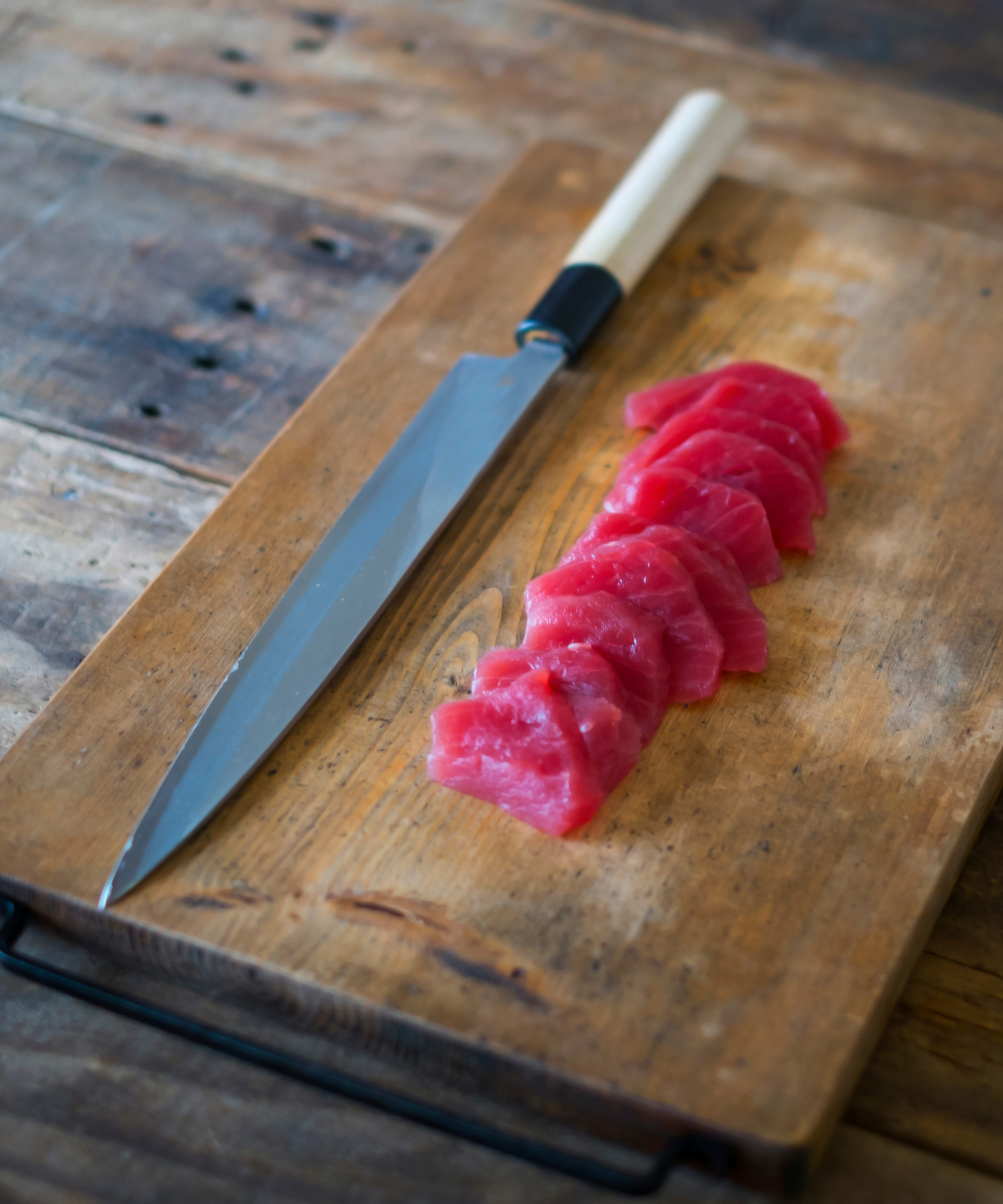
Japanese knife-making has its roots in the centuries-old tradition of samurai swordsmithing, and the techniques have been passed down through generations of craftspeople.
Director of Product Development at Kai (makers of Shun Cutlery), Serena Williams, explains the technical details. 'Japanese knives are sharper, lighter, and made from harder steel than most. Western-style knives are often made from softer steel and sharpened to a wider angle, usually 20 to 25 degrees per side, which requires more force to cut and dulls more quickly.'
'Shun knives have an exceptionally sharp edge on thinner blade stock, making the knife incredibly agile and precise,' continues Serena.' Because the blade glides through food with less pressure, you preserve the food’s cellular structure, keeping juices and flavor intact.'
It's all about control, precision, and presentation. Professional chef and restaurant owner, Maricel Gentile, has collected Japanese knives for decades, including several purchased in Tokyo and Osaka that she uses in her everyday cookery. 'A well-made Japanese knife feels like it is working with you, not against you,' explains Maricel.
Design expertise in your inbox – from inspiring decorating ideas and beautiful celebrity homes to practical gardening advice and shopping round-ups.
Types of Japanese knives
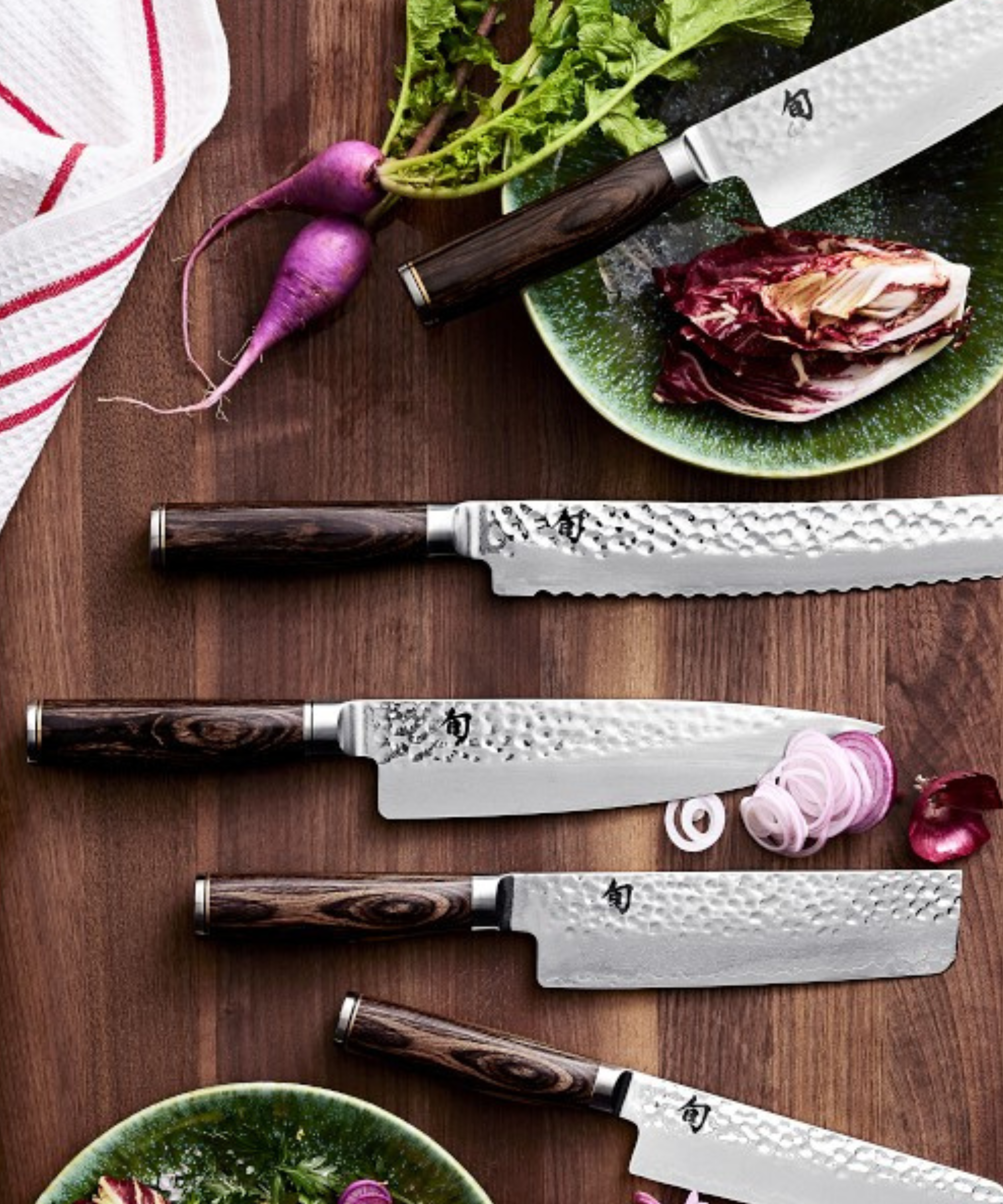
'Japanese knives come in many shapes and uses, many more than in the west,' explains Maricel. 'From all-purpose blades like the gyuto and the santoku (the 'three virtues' knife for slicing, dicing, and chopping) to specialty blades for boning fish, slicing sashimi, or even cutting noodles. Some even feature a hammered (tsuchime) finish that helps food release from the blade.'
I have listed the most popular types of Japanese knives below, so you'll be able to tell the difference when you're shopping.
- Gyuto: An all-purpose chef’s knife (Japan’s equivalent to the French chef’s knife).
- Santoku: A larger and more versatile knife, ideal for chopping, slicing, and dicing.
- Yanagiba: A long, single-bevel blade for slicing sashimi.
- Nakiri: A vegetable knife with a long, straight edge for clean push cuts.
- Sobakiri: Another flat-edge knife, designed for slicing uniformly thin noodles.
'In Japan, I have wandered through Kappabashi in Tokyo and the professional food wares district in Osaka, seeing everything from mass-produced stainless steel blades to handcrafted works of art made by master blacksmiths' explains Maricel. 'The difference in cost, size, and finish often comes down to the level of craftsmanship and the materials used.'
Are Japanese knives worth the money?
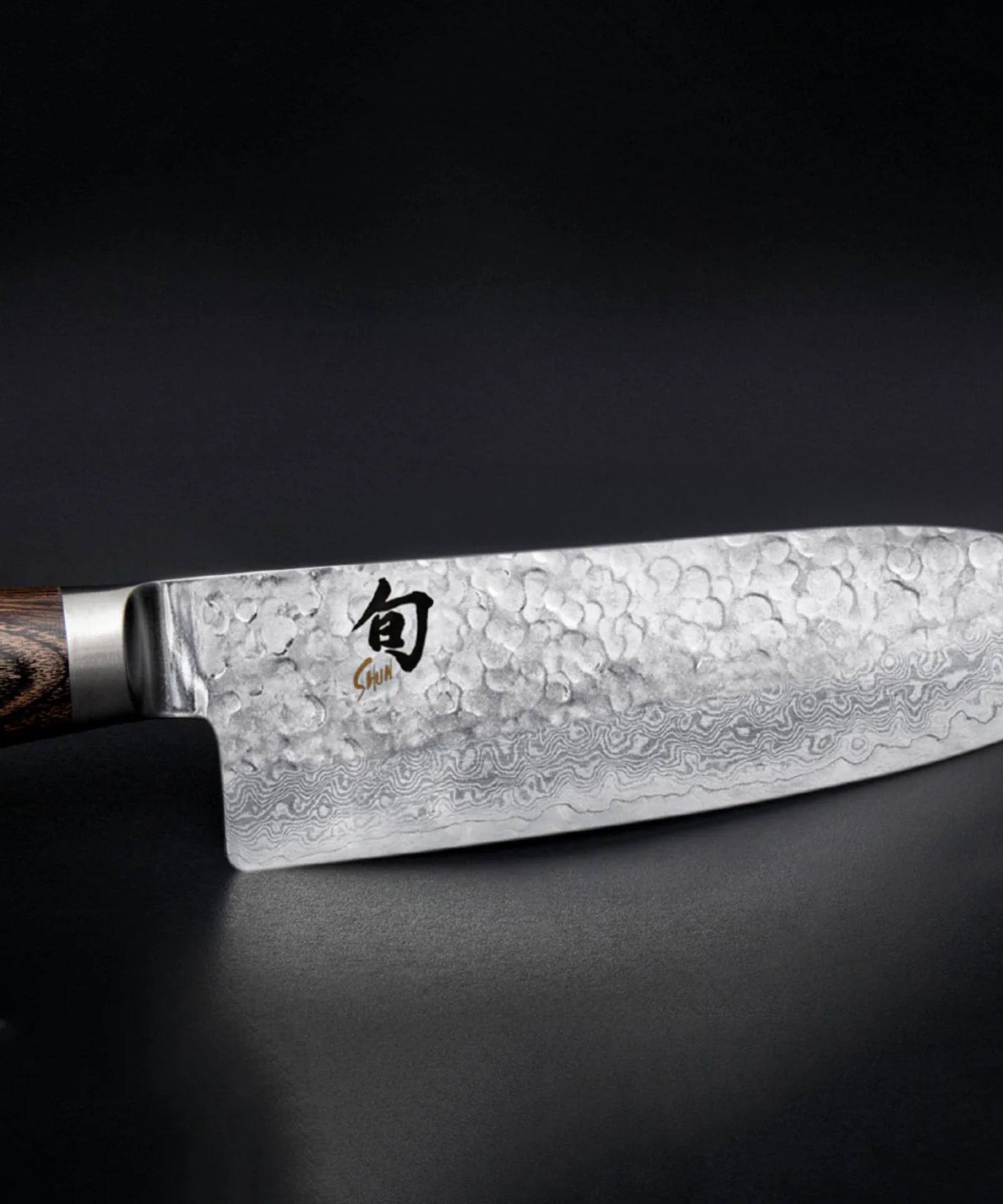
Maricel says, 'For me personally, I have smaller hands, so I always look for a knife that feels balanced and comfortable to hold. Japanese knives tend to be lighter and more agile, which makes them ideal for my style of cooking. Many traditional Japanese blades are sharpened on one side (single-bevel), which allows for incredibly precise cuts, something I especially appreciate when preparing fish or thinly slicing vegetables.'
Personally, I also value knives that are well-balanced and comfortable to hold for long periods of time, which is especially important when you cook for a living. I've been loving my Shun Nakiri knife and I recently reviewed a set of HexClad knives made from Japanese Damascus steel, which were excellent.
However, the harder steel comes with a trade-off. Don’t assume Japanese knives are lower maintenance: their thin, hard edges can chip if misused, and they often require more sharpening than their European counterparts, as well as careful storage on magnetic blocks (I have this walnut wood knife block from HexClad).
I don't mind the extra care it takes to keep them in good condition, myself, but if you love tossing your cookware in the dishwasher, or don't have the time to dedicate to keeping them pristine, Japanese knives aren't for you. I've listed the pros and cons below so you can easily weigh up whether they are worth it for your kitchen and style of cooking.
Pros of Japanese knives
- Incredible sharpness creates precise, clean cuts and reduces bruising on delicate herbs and vegetables.
- Japanese knives are lightweight, which makes them easy to control and limits fatigue over long prep sessions.
- Prestige craftsmanship also means tactile designs, eye-catching patterns, and star-quality in your kitchen.
- Specialized designs are purpose-built for specific ingredients and tasks, ideal if you do a lot of vegetable chopping, deboning, delicate paring tasks, etc.
Cons of Japanese knives
- Fragility can be a concern, since the edges are so thin, there is a risk of damage if you are cutting a hard ingredient. You should never use a Japanese knife for opening a package, for example.
- Regular maintenance is not optional, since high-carbon steel can rust without proper washing, drying and storage.
- There's a learning curve to the Japanese designs. When I got my flat-edge nakiri knife, I really struggled with the shape and technique, since I was so used to my European knife. This slowed me down at first.
- The price tag on premium Japanese craftsmanship can be prohibitively expensive, but the cost reflects the materials, expertise and heritage behind the design.
Best Japanese knives
Many brands offer effective mid-range options, so it's worth having a look at their collections to find what suits your needs. Or, I recommend visiting a shop in person to try out the feel and shape of the knife in your hand, before you make the leap on an expensive purchase.
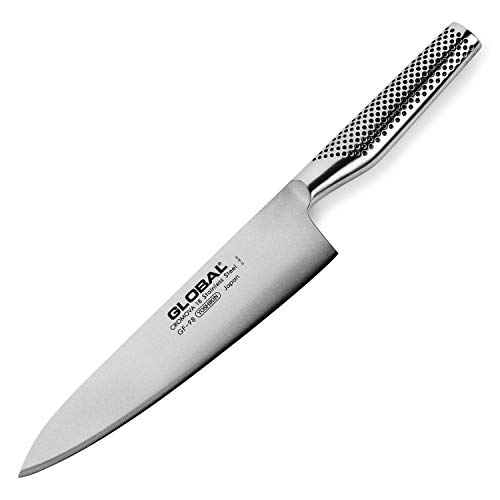
I'm a big fan of Global's 'Made in Japan' chef's knives. They are more affordable than ultra-premium brands and this model has excellent reviews on Amazon. Reviewers say it's comfortable, well-balanced, and razor sharp for everyday tasks.
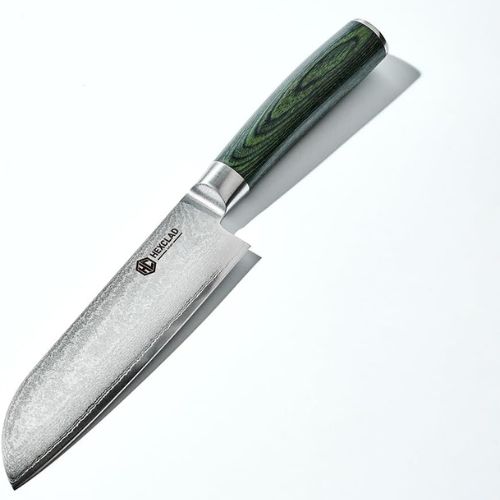
Forged from 67 layers of Japanese Damascus steel, this knife is the epitome of precision. The full tang design (metal runs through the whole handle) gives each knife better balance and control. Whether I was dicing shallots or carving a roast, the knives moved with me, not against me.
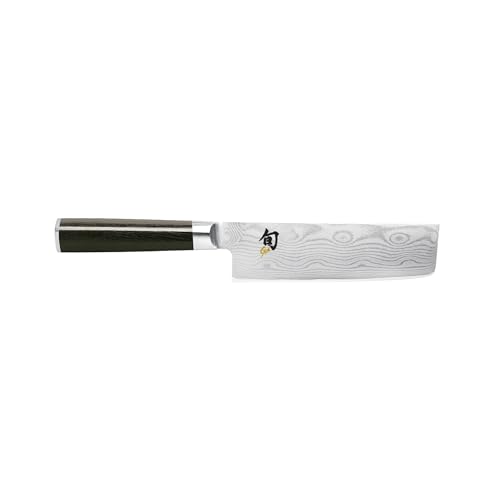
Each Shun knife is meticulously handcrafted in Japan, reflecting a legacy of traditional knife-making expertise and a dedication to superior quality. This stunning Nakiri knife is designed for chopping vegetables. I have one at home. They are ridiculously sharp and precise.

Maricel Gentile is not just a professional chef and restaurant owner, she’s a passionate teacher who has helped thousands of home cooks and professionals discover the joy of cooking Asian dishes with confidence. With appearances on The Food Network, Hulu, and PBS, chef Maricel brings her rich culinary heritage and teaching experience to the kitchen.

Serena heads up product development and sales for Kai, makers of Shun cutlery in Seki City, Japan which has been considered the heart of the Japanese cutlery industry since the 13th century. Inspired by the traditions of ancient Japan, Shun's highly skilled artisans produce blades of unparalleled quality; each piece of this fine kitchen cutlery takes at least 100 individual steps to complete.
FAQS
What is a santoku knife used for?
To find out what santoku knives are used for, I asked an expert from Kai, makers of premium Japanese Shun cutlery. Serena Williams, Director of Product Development says: 'The word santoku means “three virtues” in Japanese, referring to its ability to excel at slicing, dicing, and mincing. Like a chef’s knife, it is a multi-purpose tool, but it differs in shape. The santoku has a flatter edge profile and a slightly downturned tip.'
'This design is ideal for a push-cutting technique, where you move the knife forward and down rather than rocking it. The santoku’s shorter length, lighter weight, and agility make it exceptionally comfortable for precision work and efficient prep across meats, fish, and vegetables.'
Which knives do home cooks need?
If you want to know which Japanese knives you actually need, Director of Product Development at Kai, Serena Williams, takes it back to basics for us. She says: 'While every kitchen can benefit from a variety of blades, we recommend starting with these essentials:
Chef’s Knife – The all-purpose workhorse. Ideal for slicing, dicing, and cutting a wide range of foods. Its curved belly also makes it perfect for rocking cuts through herbs.
Utility Knife – A versatile mid-sized blade for those in-between tasks, like trimming broccoli, slicing sandwiches, or cutting smaller fruits.
Paring Knife – Best for detail work, like peeling, coring, or trimming. Essential for precise, small-scale cutting.
Bread Knife (serrated) – Perfect for crusty bread, delicate cakes, and produce with tough skins but soft interiors.
For more specialized tasks:
Large, dense vegetables (squash, cabbage) – The Shun Kanso 7" Asian Utility Knife or a Shun Vegetable Cleaver for strength and leverage.
Fish and delicate proteins – A Yanagiba or Fillet Knife for clean, even slices.
Herbs and vegetables – Nakiri for precise, straight cuts without rocking, ideal for a push-cut technique.
Whether you invest in a prestigious handmade Japanese knife that costs $500, or a budget-friendly option, TLC is essential. Hand-wash only, dry immediately (and thoroughly) and store safely on a magnetic rack or with a blade guard. For the best results, sharpen your knives regularly. With some proper maintenance, even an affordable Japanese knife can last a lifetime, and make every slice feel satisfying.
For more ways to upgrade your kitchen kit, have a look at my guide to the best cookware - tried and tested.

Lydia is the Kitchen Appliances Editor for Homes & Gardens, testing everything from air fryers and mixers to juicers and coffee machines. She trained in Culinary Arts at Leiths School of Food & Wine and previously served as the Recipe Editor for Mindful Chef.